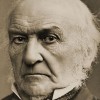
Elsie B. Michie, “On the Sacramental Test Act, the Catholic Relief Act, the Slavery Abolition Act, and the Factory Act”
Examining two sets of intertwined Parliamentary Acts that went into effect before and after the Reform Act of 1832, this entry argues that they make visible the gestures that led up to and resulted from reform.
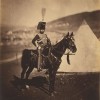
Stefanie Markovits, “On the Crimean War and the Charge of the Light Brigade”
The Crimean War sheds light on mid-Victorian perceptions of class and national identity. As literary and visual representations of the war reveal, reactions to this conflict were both more nuanced and more ambivalent than our preconceptions about Victorian jingoism might anticipate. The charge of the Light Brigade at Balaklava captures the ironies of a high Victorian military spectacle that frequently seemed to confuse the patriotic expectations of its home-front audience. A new form of heroism grew out of the bewildering experience of the Light Brigade’s defeat—and a new sense of national identity that was based in part on this new heroism.
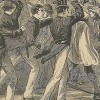
Chris R. Vanden Bossche, “On Chartism”
The Chartists sought universal male suffrage because they regarded parliamentary legislation the principal means of enacting social reform. Precisely because they did not possess the right to vote, however, they had to employ alternative forms of action. This led to debates within the movement about whether they should seek to obtain the vote through persuasion—moral force—or though insurrection—physical force. The newspaper press representing the governing elites not only condemned the threat of physical force as unconstitutional, but also depicted moral force as essentially violent and therefore illegitimate. In response, the Chartist press produced a rhetoric representing physical force as a moral right in the face of an illegitimate governing elite. However, the effectiveness of this rhetoric depended on a strategy of indefinitely deferring the use of physical force, the shortcomings of which were manifested in the aftermath of the rejection of the Chartist petitions of 1839 and 1842.
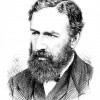
Joshua Gooch, “On ‘Black Friday,’ 11 May 1866”
The panic of 11 May 1866, initiated by the collapse of Overend, Gurney, and Company, offers a useful vantage point to survey changes in British finance, economics, and politics, as well as the cultural perception of those changes. The panic exemplifies the expansion of London’s credit markets, the effects of the 1862 Companies Act, and the emergence of a clarified central bank policy. In addition, the panic crystallizes a shift toward statistical, impersonal, and biological descriptions in economic thought alongside the emergence of multi-perspectival character narration in texts like Robert Browning’s The Ring and the Book and Wilkie Collins’s The Moonstone.
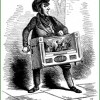
Ayşe Çelikkol, “On the Repeal of the Corn Laws, 1846”
Parliament repealed the Corn Laws, the legislation that controlled the importation of grain, in 1846. Commercial and industrial interests had been advocating the repeal for decades, claiming that the Corn Laws benefited the landed aristocracy at the expense of the middle and working classes. Free traders called for an economic system under which the state would no longer protect landowners. Heated public debates on the Corn Laws, which addressed wages, taxes, and rents, often appealed to religious and moral values, exploring whether free trade was compatible with patriotism and traditional family structures. For the Victorians, national self-reliance and the cosmopolitan spirit of cooperation were both hanging in the balance as Parliament debated the preference for domestic grain.
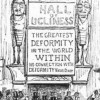
Nadja Durbach, “On the Emergence of the Freak Show in Britain”
This entry dates the emergence of the freak show as a key form of Victorian leisure to the 1840s. It demonstrates that these exhibitions of physical difference served as spaces for negotiations amongst doctors, scientists, anthropologists, and a mass consumer public about how to distinguish “normal” and “abnormal” bodies and about the cultural meanings attached to these classifications. These shows thus helped to educate the public about their place in the hierarchy of classes, races, civilizations, and nations that was so crucial to the nineteenth-century worldview.
